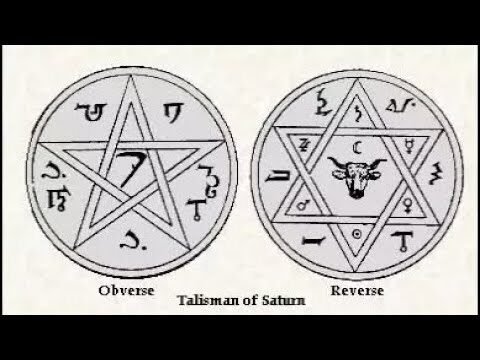Understanding the Chapters of Exodus
The Book of Exodus, a foundational text in both Jewish and Christian traditions, captivates readers with its powerful narrative of liberation and divine guidance. As the second book of the Bible, it chronicles the Israelites’ journey from slavery in Egypt to their quest for the Promised Land. But how many chapters are in Exodus, and what significance do they hold in understanding this pivotal story? This exploration delves into the structure of Exodus, shedding light on its themes and the lessons it imparts to believers and scholars alike.
What are the three primary sections of Exodus?
Exodus unfolds as a powerful narrative centered around the liberation of the Israelites from Egyptian bondage. This pivotal journey begins with their escape, symbolizing not just physical freedom but a profound spiritual awakening. The story highlights the resilience of a people yearning for autonomy and the divine intervention that guides them toward a new beginning.
The second part of Exodus introduces the covenant, where God grants the Ten Commandments to His people, establishing a moral foundation for their community. This sacred agreement emphasizes the importance of law and ethics in their lives. Finally, the narrative culminates in the instructions for the tabernacle, a divine blueprint for a sacred space where God can dwell among His people, reinforcing the intimate relationship between the divine and the faithful. Together, these parts weave a rich tapestry of liberation, law, and divine presence.
What is the central theme of Exodus?
The central message of Exodus revolves around the theme of redemption, illustrating God’s profound commitment to liberating the Israelites from slavery and establishing them as His chosen people. Through their miraculous deliverance, God not only rescues them from oppression but also provides the Law, which serves as a divine guide for living a holy and consecrated life. This narrative emphasizes the transformation from bondage to freedom, underscoring the importance of faith and obedience in a covenant relationship with God.
Who is the author of Exodus?
The Book of Exodus, traditionally attributed to Moses, has sparked considerable debate among modern scholars regarding its true authorship and composition. Many argue that it is a composite work, likely pieced together from various sources between the 9th and 5th centuries BCE. This scholarly discourse extends to the dating of the Exodus itself, with a prevailing consensus suggesting that it occurred in the 13th century BCE. As such, the exploration of Exodus not only highlights the complexities of biblical authorship but also reflects the ongoing quest for understanding the historical context of these ancient texts.
Unveiling the Journey of Liberation
Throughout history, the quest for liberation has been a powerful force that shapes societies and individuals alike. This journey often begins with a spark of awareness, igniting a collective desire for change. Movements in various cultures have emerged from the ashes of oppression, propelled by the voices of those who dare to dream of freedom. In every corner of the world, stories of courage and resilience highlight the relentless pursuit of dignity and rights, uniting people across borders in their shared struggle.
As these movements gain momentum, they evolve into dynamic forces of transformation. Grassroots organizations, activists, and ordinary citizens come together, wielding knowledge and passion to challenge the status quo. The power of solidarity becomes evident as diverse groups recognize their common goal: to dismantle barriers and build inclusive societies. This collaborative spirit not only empowers individuals but also fosters a sense of hope, inspiring new generations to continue the fight for justice and equality.
Ultimately, the journey of liberation is not merely about achieving freedom; it is about redefining the narrative of humanity. Each step taken in this journey serves as a reminder of the strength found in unity and the importance of embracing diversity. As we unveil these stories of triumph, we recognize that the path to liberation is ongoing, marked by both struggles and victories. It invites us all to reflect on our roles in shaping a future where everyone can thrive, united in the spirit of freedom.
Key Themes and Lessons from Each Chapter
In the journey through the chapters, readers encounter a tapestry woven with themes of resilience, growth, and the transformative power of relationships. Each chapter unfolds a new lesson, highlighting how adversity can serve as a catalyst for personal development. Characters grapple with their fears and insecurities, ultimately discovering that the strength to overcome challenges often lies within their connections to others. The narrative emphasizes the importance of empathy and understanding, showcasing how supportive bonds can illuminate even the darkest paths.
As the story progresses, the interplay between choice and consequence emerges as a pivotal theme. Readers are invited to reflect on how decisions shape destinies and the ripple effects they create in the lives of others. The chapters illustrate that while the journey may be fraught with obstacles, the wisdom gained through these experiences is invaluable. Ultimately, the lessons imparted encourage a deeper appreciation for the journey itself, reminding us that growth often stems from the relationships we nurture and the choices we make along the way.
A Deep Dive into the Exodus Narrative
The Exodus narrative serves as a powerful tale of liberation and identity, chronicling the journey of the Israelites from slavery in Egypt to freedom in the Promised Land. This story encapsulates themes of resilience, faith, and divine intervention, showcasing the struggles and triumphs of a people yearning for autonomy. As they traverse the desert, the Israelites not only confront external challenges but also grapple with their internal transformation, learning to trust in a higher power while forging a new communal identity. The narrative resonates across generations, offering timeless lessons on the human spirit’s capacity to overcome adversity and seek a brighter future.
Exploring Faith and Identity Through Exodus
The journey of Exodus serves as a powerful metaphor for exploring faith and identity. It captures the essence of longing for freedom and the quest for belonging, resonating deeply with those navigating the complexities of their spiritual lives. As the Israelites ventured through trials and tribulations, their narrative reflects the universal struggle to reconcile personal beliefs with communal identity, inviting individuals to examine their own paths of faith.
At the heart of this exploration lies the transformative power of liberation. The Exodus story teaches us that faith is not merely a static belief, but a dynamic journey filled with challenges that shape our understanding of self. Each step taken by the Israelites symbolizes the courage required to confront obstacles, reminding us that our own spiritual journeys are often marked by moments of doubt and revelation, ultimately leading to a stronger sense of identity.
Moreover, the themes of Exodus resonate in contemporary discussions of faith. As individuals grapple with their beliefs in an ever-changing world, the lessons of resilience and hope found in this ancient narrative encourage a deeper connection to one’s roots. By reflecting on the Exodus, we not only honor the stories of those who came before us but also find inspiration to forge our own identities, intertwining faith and personal experience in a meaningful way.
The Significance of Each Chapter in Context
Each chapter of a book serves as a building block, contributing uniquely to the overall narrative and thematic structure. By dissecting the significance of each section, readers can uncover the intricate layers of meaning woven throughout the text. Each chapter not only advances the plot but also deepens character development, offering insights into motivations and conflicts that resonate on a personal level.
Additionally, the transitions between chapters often reflect pivotal moments in the character’s journey, marking shifts in perspective or tone that enhance the reader’s engagement. These moments are carefully crafted to evoke emotional responses, guiding the audience through a rollercoaster of experiences that mirror real-life complexities. Analyzing these transitions allows readers to appreciate the author’s craftsmanship and the deliberate choices made to foster a connection with the audience.
Ultimately, understanding the significance of each chapter enriches the reading experience, transforming it from a passive activity to an active exploration of ideas and themes. This deeper comprehension not only enhances enjoyment but also opens the door to discussions about the broader implications of the narrative. By recognizing how each chapter contributes to the whole, readers cultivate a more profound appreciation for literature and its power to reflect the human experience.
The Book of Exodus captivates readers not only with its profound narrative but also with its structure, consisting of 40 compelling chapters. Each chapter unfolds a critical part of the journey of the Israelites, intertwining themes of liberation, faith, and divine intervention that resonate throughout history. Understanding the number of chapters in Exodus invites deeper exploration of its rich lessons and enduring significance in various cultural and religious contexts.







